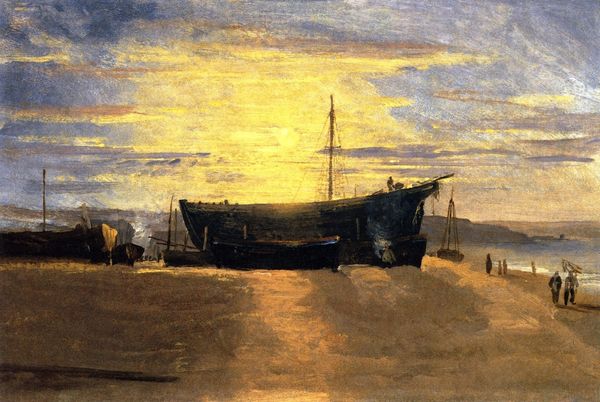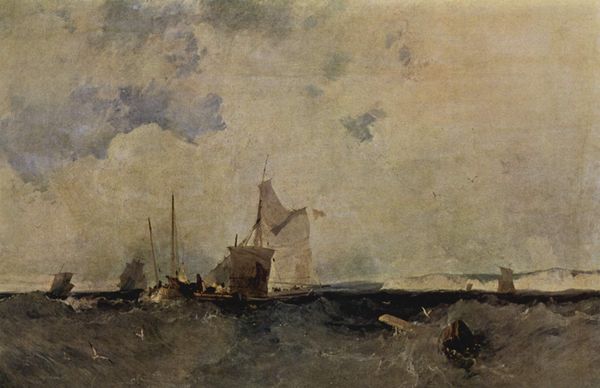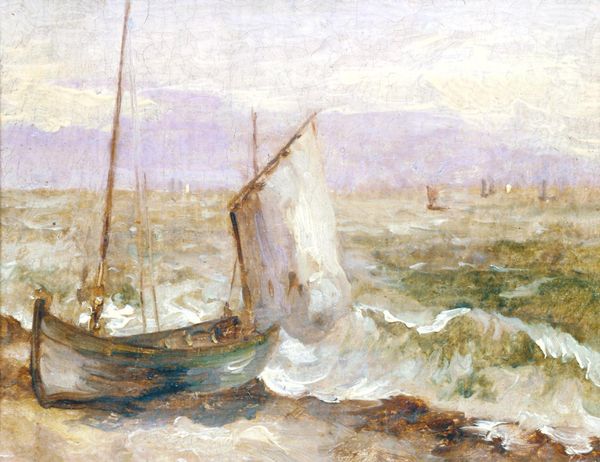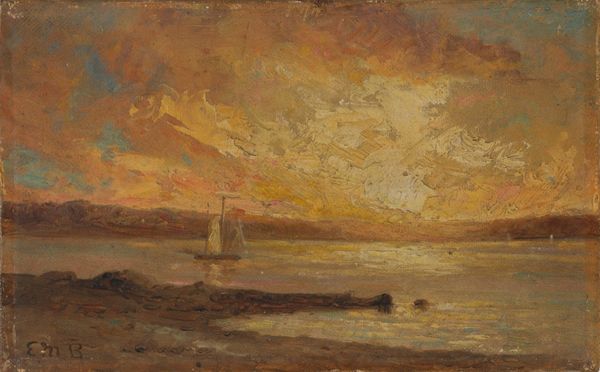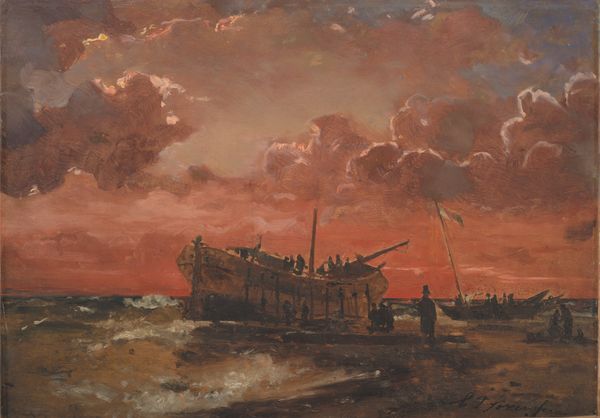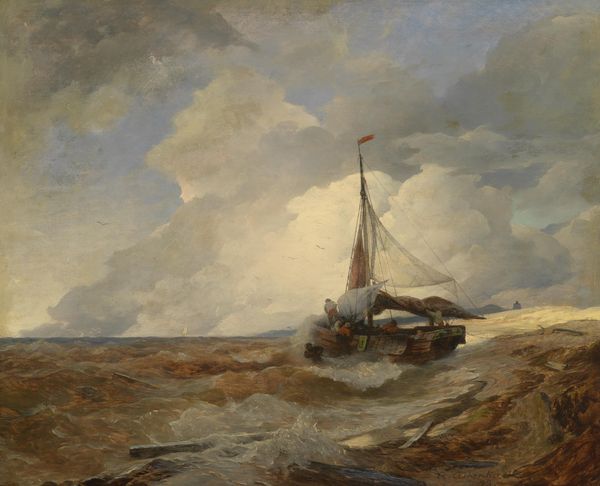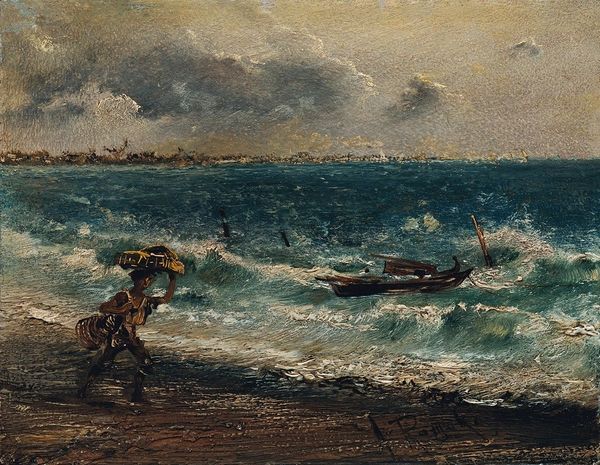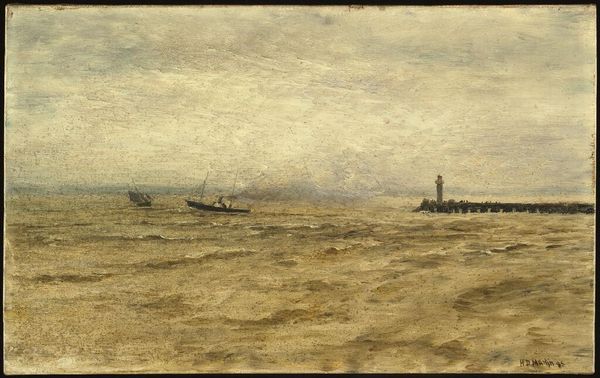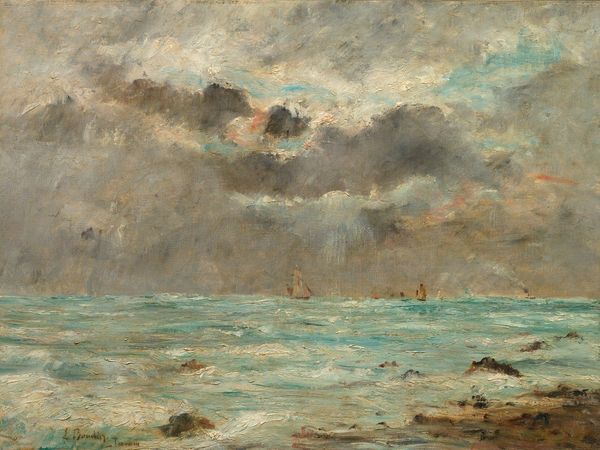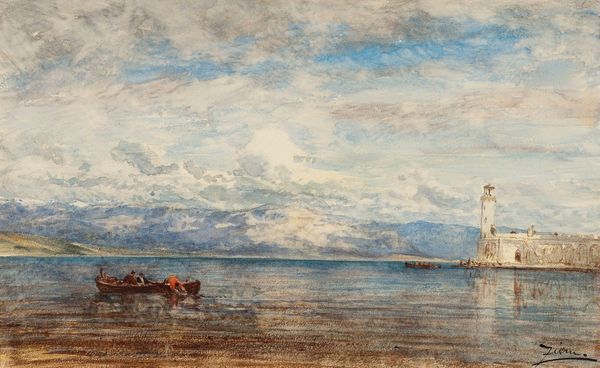
painting, plein-air, oil-paint, impasto, frottage
#
boat
#
painting
#
plein-air
#
oil-paint
#
landscape
#
impressionist landscape
#
oil painting
#
impasto
#
ocean
#
post-impressionism
#
frottage
#
sea
Copyright: Public domain
Editor: Here we have Van Gogh's "View of the Sea at Scheveningen" from 1882, rendered in oil. The heavy impasto gives the whole scene an almost tactile quality. It feels…ominous. All those choppy waves and dark clouds. What do you see in this piece, considering its place in the art world? Curator: Well, first off, consider Scheveningen itself. It was a small fishing village undergoing rapid transformation into a tourist destination. Van Gogh's choice to depict the working life—the fishermen, the laborers—rather than the glamorous seaside resort, positions him firmly within a socially conscious art tradition. The painting pushes back against idealized landscapes; it reflects a grittier reality. What do you think that implies? Editor: It implies he was interested in more than just pretty scenery. That he wanted to highlight a particular lived experience that might have been overshadowed by the burgeoning tourism industry. So, this isn't just a landscape painting; it’s a statement about socio-economic change? Curator: Precisely! And how do you see this connecting to his signature impasto technique? Editor: Hmm... The rough, thick paint mirrors the harshness and instability of the sea, and the difficult life of those who depended on it. Almost as if he’s trying to give us that visceral experience! Curator: Indeed! Consider the broader art world context. This painting exists at a point where Realism is giving way to Impressionism and then Post-Impressionism. Van Gogh is grappling with how to represent the world truthfully and expressively. Think about what other artists were showing, or *not* showing, at the time. It reveals the complex political act that representation always entails. Editor: That's fascinating. I always focused on the stylistic aspects, but the social commentary adds a whole new layer. I hadn't fully appreciated its role as social documentation of working lives amid monumental industrial shifts. Curator: Exactly! Looking closer, this is more than a beach landscape. The painting becomes a statement about society, and Van Gogh is using imagery to tell this story. Editor: That really changes my perception of Van Gogh and his motivations. I see this familiar scenery with entirely different eyes.
Comments
No comments
Be the first to comment and join the conversation on the ultimate creative platform.
